In today’s environmentally-conscious world, the importance of eco-friendly cutting boards and sustainable materials cannot be overstated. Plastic cutting boards, though commonly used, can contain harmful toxins and require extensive resources to produce.
However, there are alternative options that are both non-toxic and environmentally friendly. Wood, bamboo, natural rubber, and stone are all sustainable materials that can be utilized in cutting board production. By considering the sourcing and production methods of these materials, individuals can make a positive impact on the environment.
Key Takeaways
- Cutting boards are crucial in the kitchen and it is important to ensure they are made with clean materials.
- Eco-friendly cutting boards are non-toxic and environmentally friendly, unlike plastic cutting boards which can contain toxins and require significant resources to produce.
- Wood, bamboo, natural rubber, and stone are sustainable materials that are great for making eco-friendly cutting boards.
- Newly’s reclaimed wood cutting boards, Public Goods’ affordable cutting boards made from compressed paper, wood fiber, and silicon, Our Place’s Walnut Cutting Board, and Chop Values’ cutting boards made from recycled bamboo chopsticks are all excellent eco-friendly options to consider.
The Dangers of Plastic Cutting Boards
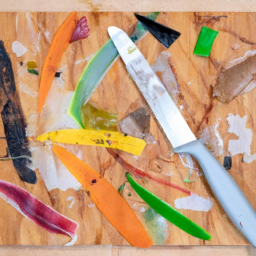
Plastic cutting boards, which can contain toxins and require significant resources to produce, pose potential dangers to both the environment and the health of users. The dangers of plastic cutting boards arise from the fact that they can harbor bacteria, which is difficult to completely remove even with thorough cleaning. Moreover, the toxins present in plastic can leach into food when the board is scratched or damaged.
Thankfully, there are sustainable alternatives to plastic cutting boards that address these concerns. Materials like wood, bamboo, natural rubber, and stone offer safer and more eco-friendly options. Wood and bamboo cutting boards are not only durable but also renewable resources. Natural rubber cutting boards are low maintenance and provide a good grip. Stone cutting boards, although hygienic, can dull knives if not polished naturally.
Benefits of Eco-friendly Cutting Boards
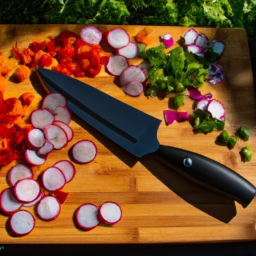
Bamboo and wood cutting boards provide a durable and environmentally conscious alternative for kitchen use. These eco-friendly cutting boards offer numerous benefits, including:
- Sustainability: Bamboo and wood are renewable resources that can be harvested without causing significant harm to the environment.
- Non-toxic: Unlike plastic cutting boards, which can contain harmful chemicals, eco-friendly options are free from toxins and safe for food preparation.
- Durability: Bamboo and wood cutting boards are sturdy and can withstand heavy use without warping or cracking.
- Easy maintenance: Eco-friendly cutting boards can be easily cleaned with warm soapy water and require minimal maintenance to keep them in good condition.
In addition to their practicality and sustainability, eco-friendly cutting boards come in a variety of designs, allowing you to choose one that suits your kitchen aesthetic. From sleek and minimalist to rustic and farmhouse-inspired, there are options to match any style.
Advantages of Wood as a Cutting Board Material
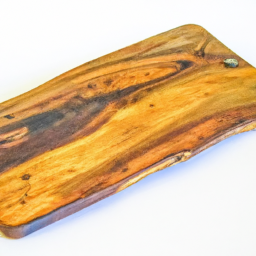
Wood cutting boards offer a natural and durable surface for food preparation. They are resistant to knife marks and can be easily maintained. Wood is known for its self-healing properties, meaning that knife marks tend to close up on their own over time. This helps to maintain the integrity of the board and prevents deep grooves from forming.
Wood cutting boards also have natural antimicrobial properties that help to inhibit the growth of bacteria. This makes them a hygienic choice for food preparation. Additionally, wood cutting boards add warmth and character to the kitchen, enhancing the overall ambiance.
When it comes to choosing a wood cutting board, bamboo is a popular option. Bamboo is a sustainable and renewable resource, making it an eco-friendly choice. It is also highly durable and resistant to water, making it ideal for use in the kitchen. Bamboo cutting boards are lightweight, easy to clean, and gentle on knife edges.
Overall, wood cutting boards, particularly those made from bamboo, offer numerous advantages in terms of durability, hygiene, and sustainability. They are an excellent choice for any kitchen.
Why Bamboo Cutting Boards Are a Sustainable Choice
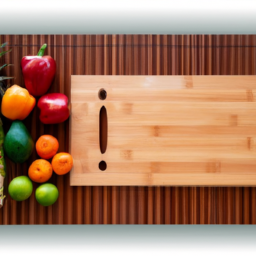
Bamboo cutting boards have gained popularity due to their durability and environmentally friendly properties. They are a sustainable choice that offers several benefits for both the kitchen and the planet. Here are some key reasons why bamboo cutting boards are a great option:
Durability: Bamboo is a strong and resilient material that can withstand heavy use and resist knife marks. This makes bamboo cutting boards more durable compared to other materials like plastic or glass.
Eco-friendly: Bamboo is a renewable resource that grows quickly and does not require pesticides or fertilizers. Choosing bamboo cutting boards reduces the demand for traditional wood and helps preserve forests.
Low maintenance: Bamboo cutting boards are easy to clean and maintain. Simply wash them with warm soapy water and let them air dry. It is recommended to oil the board occasionally to keep it moisturized and prevent cracking.
Knife-friendly: Bamboo cutting boards are gentle on knife edges, reducing the need for frequent sharpening. The natural grain of bamboo provides a smooth cutting surface that won’t dull your blades.
The Benefits of Natural Rubber Cutting Boards
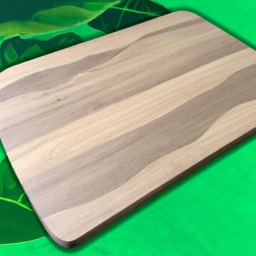
Natural rubber cutting boards provide a sturdy and non-toxic surface for food preparation. They offer several advantages over other types of cutting boards.
Firstly, natural rubber is highly durable, meaning it can withstand heavy use without warping or cracking. This makes it a long-lasting option for any kitchen.
Additionally, natural rubber has a natural grip, which helps prevent slipping and sliding of ingredients during chopping. This ensures safety and precision while cutting.
In terms of maintenance, natural rubber cutting boards are relatively easy to care for. It is recommended to wash them with warm soapy water after each use and allow them to air dry. To prevent staining, it’s best to avoid cutting highly pigmented foods like beets directly on the board. Regular oiling with food-grade mineral oil can help maintain the board’s appearance and prevent it from drying out.
Hygienic Qualities of Stone Cutting Boards
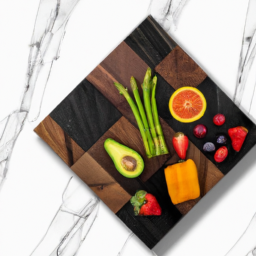
After exploring the benefits of natural rubber cutting boards, it is important to consider another option with hygienic properties: stone cutting boards. Stone cutting boards are known for their durability and unique aesthetic appeal. They offer several advantages in terms of cleanliness and sanitation.
Here are some key points regarding the hygienic properties of stone cutting boards:
- Non-porous surface: Stone cutting boards have a non-porous surface that prevents the absorption of liquids and odors, making them highly resistant to bacterial growth.
- Easy to clean: Stone cutting boards can be easily cleaned with soap and water. Their smooth surface allows for effortless removal of food particles and stains.
- Heat resistance: Stone cutting boards are heat resistant, which means they can be used as a surface for slicing hot foods without the risk of damage or warping.
- Natural disinfection: The natural properties of stone, such as its density and composition, make it inherently resistant to bacteria and mold.
To maintain the hygienic properties of stone cutting boards, it is recommended to follow these cleaning methods:
- Wash with mild soap and warm water after each use.
- Avoid using harsh chemicals or abrasive cleaning tools that can damage the surface.
- Dry the board thoroughly to prevent moisture buildup.
- Occasionally apply food-safe mineral oil to maintain the board’s appearance and prevent cracking.
Considerations for Sourcing and Production of Cutting Board Materials
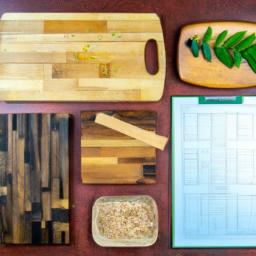
When choosing a cutting board, it is essential to consider the sourcing and production methods of the materials used. Sourcing challenges can arise when trying to find materials that are both sustainable and eco-friendly.
However, there are certifications available that can help consumers make informed choices. One such certification is the Forest Stewardship Council (FSC), which ensures that the wood used in cutting boards comes from responsibly managed forests.
Another certification to look for is the USDA Organic label, which guarantees that the materials used are free from harmful chemicals and pesticides.
Additionally, the Cradle to Cradle certification assesses the entire lifecycle of a product, ensuring that it is environmentally friendly from production to disposal.
Top 5 Eco-friendly Cutting Boards to Consider
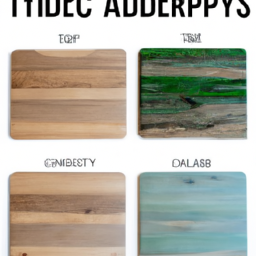
One option to consider for an environmentally conscious cutting board is Newly’s reclaimed wood cutting boards. These cutting boards are made from recycled or repurposed materials, contributing to reducing waste. Additionally, they offer a unique and stylish addition to your kitchen.
When it comes to maintenance tips for eco-friendly cutting boards, it’s important to remember a few key points. Firstly, hand wash the cutting board with mild soap and warm water to avoid warping or damaging the wood. Secondly, avoid soaking the board in water for extended periods as this can cause it to swell or crack. Lastly, regularly oil the board with food-grade mineral oil to maintain its beauty and prevent drying.
When choosing the right size cutting board for your needs, consider the following factors:
- The size of your kitchen countertop or workspace.
- The amount and size of food you typically prepare.
- The amount of storage space available in your kitchen.
- Your personal preferences and cooking habits.
Details About Newly’s Reclaimed Wood Cutting Boards
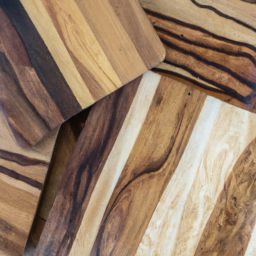
Newly, a certified B Corporation, creates unique and practical cutting boards from reclaimed wood and recycled chopsticks. By using these sustainable materials, Newly not only reduces waste but also promotes the concept of upcycling.
Reclaimed wood, sourced from old buildings or furniture, gives the cutting boards a rustic and distinctive look. On the other hand, recycled chopsticks provide a unique texture and add a touch of elegance to the design. These cutting boards not only serve as functional kitchen tools but also make for thoughtful and eco-friendly gifts.
The combination of reclaimed wood and recycled chopsticks creates a truly one-of-a-kind product that aligns with environmentally conscious values. With Newly’s commitment to sustainability, customers can enjoy their cutting boards knowing they have made a positive impact on the planet.
Details About Public Goods Affordable Sustainable Cutting Board
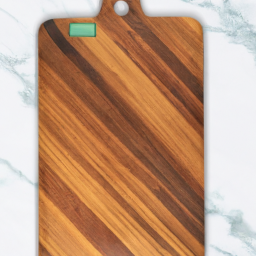
Public Goods’ cutting boards combine high-quality wood with sturdy rubber, offering customers a durable and sustainable option for their kitchen needs. These cutting boards have several key features that make them stand out:
- Made from compressed paper, wood fiber, and silicon.
- Incorporate recycled chopsticks, minimizing environmental impact and promoting sustainability.
- The sturdy rubber provides a non-slip grip, ensuring safety during food preparation.
- The cutting boards are available in small and large sizes, catering to various kitchen requirements.
The benefits of using recycled chopsticks in cutting boards are significant. By repurposing this material, Public Goods reduces waste and prevents it from ending up in landfills. Moreover, the use of recycled chopsticks helps conserve natural resources and reduces the need for harvesting new timber.
Customers can feel confident in their purchase, knowing that they are choosing a cutting board that not only meets their kitchen needs but also contributes to a more sustainable future.
Frequently Asked Questions
Are There Any Health Risks Associated With Using Plastic Cutting Boards?
Health risks associated with using plastic cutting boards may arise due to the potential presence of toxins. Plastic boards can leach harmful chemicals into food during cutting, posing a risk to human health.
Moreover, plastic cutting boards are less durable compared to other materials, leading to the development of deep grooves that harbor bacteria.
To mitigate these risks, it is advisable to opt for eco-friendly cutting boards made from non-toxic and sustainable materials.
What Are the Benefits of Using Eco-Friendly Cutting Boards?
Using eco-friendly cutting boards made from sustainable materials has several benefits.
These cutting boards are environmentally friendly, as they’re made from clean and non-toxic materials. They also have a lower environmental impact compared to plastic cutting boards, which require significant resources to produce.
By using eco-friendly cutting boards, individuals can contribute to reducing waste and promoting sustainability.
Additionally, these cutting boards are durable and cost-effective, making them a practical choice for the kitchen.
Why Is Wood Considered a Good Material for Cutting Boards?
Wood is considered a good material for cutting boards because of its properties. It is durable, providing a long-lasting surface for cutting and chopping. Wood is also knife-friendly, reducing the risk of dulling the blades.
In addition to its functionality, wood has aesthetic appeal, adding a natural and warm look to the kitchen. Moreover, wood has natural antimicrobial properties, making it a hygienic choice for food preparation.
Overall, wood is a popular and reliable option for eco-friendly cutting boards.
What Makes Bamboo Cutting Boards a Sustainable Choice?
Bamboo cutting boards are a sustainable choice due to their durable nature and sustainable manufacturing process.
Bamboo is a fast-growing grass that can be harvested every three to five years, making it a highly renewable resource. Additionally, bamboo requires minimal water and pesticides to grow, reducing its environmental impact.
Bamboo cutting boards also have natural antimicrobial properties, making them hygienic for food preparation.
Overall, choosing bamboo cutting boards promotes sustainability and reduces the use of scarce resources.
How Do Natural Rubber Cutting Boards Provide a Good Grip and Require Low Maintenance?
Natural rubber cutting boards provide a good grip and require low maintenance compared to plastic cutting boards. The rubber material offers a non-slip surface, ensuring stability while cutting.
It is also easier to clean, as rubber is naturally resistant to stains and odors. Furthermore, natural rubber cutting boards are eco-friendly, as they are made from sustainable materials.